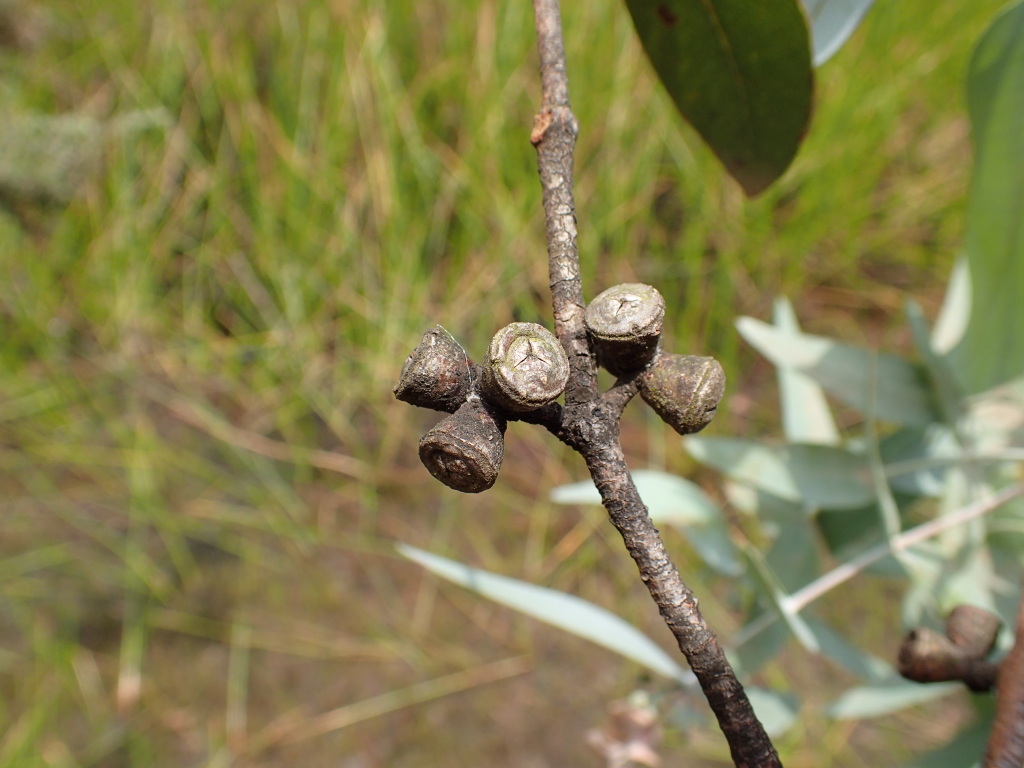Eucalyptus cephalocarpa
Blakely Mealy StringybarkTree to 20 m tall; bark rough to small branches, fibrous, thick, longitudinally furrowed. Crown of green adult leaves. Juvenile leaves sessile, opposite for many pairs, orbicular to ovate, rarely broadly lanceolate, to 9 cm long, 4.5 cm wide, glaucous or green; adult leaves petiolate, alternate, lanceolate to falcate, 6.5–18 cm long, 1–2 cm wide, concolorous, dull to glossy, green; reticulation dense, with numerous, island oil glands. Inflorescences axillary, unbranched; peduncles to 1 cm long, 7-flowered; buds sessile to shortly pedicellate, diamond-shaped maturing clavate, to 0.7 cm long, 0.4 cm diam., scar present; operculum conical; stamens inflexed; anthers dorsifixed, cuneate; ovules in 4 vertical rows; flowers cream. Fruit sessile to shortly pedicellate, obconical to campanulate, to 0.7 cm long, 0.7 cm diam.; disc raised-annular; valves 3 or 4; seed grey-brown to blackish, flattened-ellipsoid, minutely pitted to almost smooth, with ventral hilum. Flowers Feb.–Apr.
VVP, GipP, Gold, CVU, DunT, EGL, EGU, HSF, HNF, Strz, VAlp. Also NSW. Also west of Greencape and in Nadgee Nature Reserve in far south-eastern New South Wales. In Victoria from near Castlemaine, Kinglake and the Mornington Peninsula east to Mallacoota, occurring on a range of sites from around low-lying areas to sandplains and low ridges and slopes, always on poor soil.
Plants in East Gippsland are usually only slightly glaucous on the buds and seedlings, those closer to Melbourne usually have conspicuously glaucous growing tips in the adult crown as well as very glaucous buds and seedlings.
Mixed populations of plants with 3- or 7-flowered inflorescences have been observed in the Fryers Range and 7–11-flowered inflorescences have been observed near Bengworden.
Brooker, M.I.H.; Slee, A.V. (1996). Eucalyptus. In: Walsh, N.G.; Entwisle, T.J., Flora of Victoria Vol. 3, Dicotyledons Winteraceae to Myrtaceae, pp. 946–1009. Inkata Press, Melbourne.
 Spinning
Spinning

